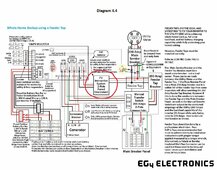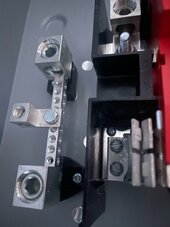TheFlumph
New Member
I got this https://www.homedepot.com/p/Siemens...-General-Duty-Fused-Outdoor-GF224NR/302352591 200a fused disconnect that goes between my feeder tap and my inverter. There are two poles for the hot wires and a ground bar. What do I do with neutral? does it just pass through the box?
Or is what I thought the ground bar is actually for neutral? Sorry if this is basic, Ive never worked with one of these.
and to my understanding, neutral never gets fused correct?

Or is what I thought the ground bar is actually for neutral? Sorry if this is basic, Ive never worked with one of these.
and to my understanding, neutral never gets fused correct?






